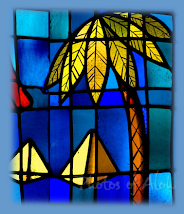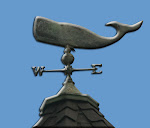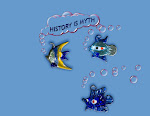From The Advertiser
Reprinted from July 17, 2009
By Dayton Morinaga
Advertiser Staff Writer
Some legends never die.
How else to explain Eddie Aikau, a man renowned for surfing extra-large waves who became larger than life in his afterlife?
"When people say Eddie is a hero, it makes us feel very proud," said his younger brother, Clyde Aikau. "Still, to this day, tears come down as I talk about it. But at the same time, it is very humbling to know that people still recognize the name Eddie Aikau."
Before tragedy struck Aikau in 1978, he was already internationally known as a surfer and lifeguard.
Aikau was one of Hawai'i's first professional surfers, ranked No. 12 on the inaugural ASP World Tour in 1976.
But it was away from the tour — in the giant surf on O'ahu's North Shore — where Aikau first became recognized.
"Competitive surfing was not where he shined," said Randy Rarick, who surfed with the Aikau brothers in the 1960s and '70s. "Where he really shined was in the big surf."
It is why the first big-wave surfing contest in the world was created in his honor — the Quiksilver In Memory of Eddie Aikau at Waimea Bay. The event started in 1984, and is still considered the most recognized and prestigious big-wave contest in the world.
Sadly, the tragedy is as much a part of the Aikau distinction as his surfing.
He was lost at sea in March 1978 while attempting a solo rescue for the capsized Hokule'a voyaging canoe. The ensuing search for Aikau captivated the entire state, although his body was never found.
The Man
Long before Jet Ski and other personal watercraft became in vogue for tow-in surfing and assisting lifeguards, Aikau was paddling into giant waves and swimming through treacherous conditions to save lives.
"The Aikau family was water-oriented; not just surfing, they were divers, sailors, paddlers," said George Downing, a longtime friend of the family who is also the contest director for the Quiksilver In Memory of Eddie Aikau contest.
"Eddie had the water knowledge. That's what made him such a great lifeguard and surfer."
Aikau actually dropped out of high school so he could spend more time in the ocean. His classroom — and playground — became Waimea Bay.
"Those were different times," Clyde Aikau said. "My family was really poor, so my dad was OK with Eddie dropping out as long as he got a job and helped provide for the family.
"I would not recommend it for kids now. They need to stay in school, get that education."
Aikau's choice paid off when the City & County of Honolulu named him the first official lifeguard at Waimea Bay in 1967.
He was involved in hundreds of rescues over the next decade, many of them undocumented.
"He would make a rescue and when it came time to fill out the forms, he would say 'nah, not important. The guy is alive, that's the important thing,' " Downing said. "He just had so much humility."
Before and after his work shifts, Aikau would surf at Waimea Bay, especially when the waves were big.
At the time, only an elite handful of surfers had the knowledge and courage to ride Waimea Bay when wave-face heights surpassed 40 feet. Aikau was at the top of the pecking order.
"Some people are born to be race car drivers, some are born to climb the highest mountains; Eddie was born to ride gigantic waves," Clyde Aikau said. "Surfing Waimea Bay, I would categorize him as confident, fearless and calculated."
Aikau's only victory in a professional surfing contest came in 1977, at the prestigious Duke Kahanamoku Classic at Sunset Beach.
"He didn't like surfing the tour at all," Clyde Aikau said. "The waves were small at a lot of places around the world, and big waves was his thing."
Shortly after winning the Duke Kahanamoku Classic, Aikau left the surfing tour so he could concentrate on training for the Hokule'a voyage to Tahiti.
The Myth
Aikau was not part of Hokule'a's original voyage in 1976. Still, members of the 1978 crew knew of him.
"He was a hero to me even before we became part of that crew," said Bruce Blankenfeld, who was also on the 1978 Hokule'a crew. "I was like 10 years younger than him, so I was kind of in awe because I knew about everything he did as a waterman."
Despite his status as a big-wave surfing star, Aikau kept his place on the Hokule'a.
"He was always a gentleman," Blankenfeld said. "He was so easy to talk to, you felt like you knew him forever, even though we trained together for less than a year."
The Hokule'a departed Magic Island on March 16, 1978, before a crowd estimated at 10,000. A few hours later, the double-hulled canoe capsized in the dark of night in the rough Kaiwi Channel.
True to his lifeguard and surfing roots, Aikau volunteered to paddle on a surfboard in an attempt to reach Lana'i for help.
"It was kind of a matter-of-fact deal with him, like it wasn't a big deal and he was going to do it," Blankenfeld said. "In my mind, there was no doubt. I felt certain he was going to make it because he was so at ease and at home in the water."
Several hours after Aikau paddled away, a rescue helicopter found the Hokule'a.
"When the whole incident happened, when the helicopter brought home the crew and Eddie wasn't there, we heard so many conflicting stories," Clyde Aikau said. "It was a very tragic time and people get crazy and excited at times like that. That's what tore our family. We just wanted the truth."
The basic truth was that Aikau was lost at sea. Forever.
"You get to be pretty intimate as a crew on Hokule'a, so it was extremely difficult to lose one of us," Blankenfeld said. "I imagine it was even more devastating for his family."
Now, 31 years later, Clyde Aikau said: "The family is at peace with it."
"There was a lot of blame going on that the captain (David Lyman) was responsible and so forth," Clyde Aikau said. "I want to make sure that the captain knows that no matter what he did that day, no matter what anybody in that group did that day, Eddie would have found a way to leave the Hokule'a and go get help. That's just the kind of guy he was."
The Hokule'a returned to voyaging in 1980, and has made several trips since.
"It seemed like the whole voyaging thing was on the edge of collapse after what happened to Eddie," Blankenfeld said. "But thanks to the Aikau family, they let us know that Eddie's life was about helping others and that everything was OK."
The Legend
Three words have come to embody the spirit of Aikau: Eddie would go.
The phrase was born in the late 1980s, when contest officials were in the midst of deciding whether to run the Quiksilver In Memory of Eddie Aikau in huge waves at Waimea Bay.
Glen Moncata, a marketing director for Quiksilver, recalls: "It was a giant, gnarly day, and we were asking the surfers if they wanted to go out and surf. Mark Foo kind of looked out and said well, Eddie would go."
The phrase is now the motto of the contest, and has spread throughout the world on bumper stickers, posters, caps and T-shirts.
"I get 200 to 300 letters a year from people around the world looking for those stickers," Moncata said. "I even got one request from Germany this year. It has really reached out beyond just the surfing public."
The original "Eddie Would Go" stickers and posters from the late 1980s can fetch hundreds, if not thousands, of dollars at surf auctions or through the Internet.
In keeping with the motto, the contest can run only on a day when wave-face heights are at least 40 feet at Waimea Bay. Because of the strict standards, it has been completed just seven times, including the first one in 1984.
However, a ceremony is held at Waimea Bay every December to honor Aikau and bless the potential running of the contest. Each year, the ceremony draws hundreds of spectators and surfers.
"That's what the event is truly about," the contest director Downing said. "It's about recognizing this individual who gave so much to life saving. If we get to run the surfing portion, that's a bonus."
Perhaps most important, the popularity of the stickers and the magnitude of the contest have perpetuated the accomplishments of Aikau.
"The beauty is, you have whole new generations of surfers and sailors and people in general who know who he is," Blankenfeld said. "He was a legend in his time to a lot of people, but now he's world renowned."
As Quiksilver's Moncata put it: "Eddie is now a true Hawaiian hero."
If Aikau were around today, he would be 63. Clyde Aikau is 59, and still surfs with his 15-year-old son, Ha'a.
"He would be retired from lifeguarding, so he would be right there surfing with us," Clyde Aikau said. "But you know what? Eddie had a great life and we're thankful for that. As a family, we're so proud and humbled that after so many years, so many people still recognize him for what he did, which was to give the ultimate give of his life to try and save others."
Reach Dayton Morinaga at dmorinaga@honoluluadvertiser.com.
Monday, December 8
Subscribe to:
Comments (Atom)
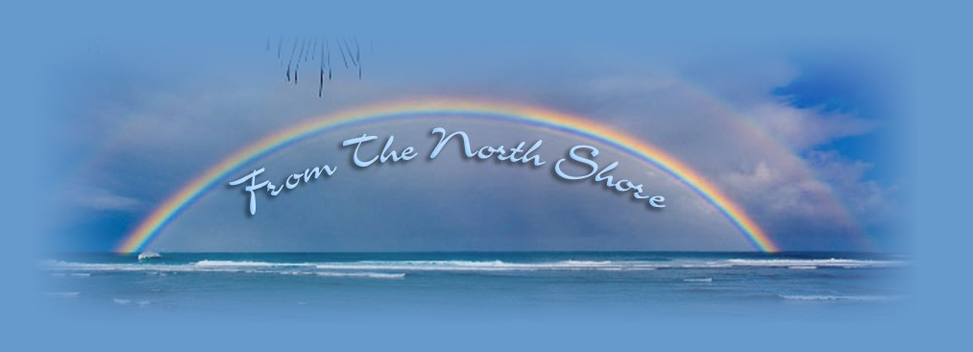
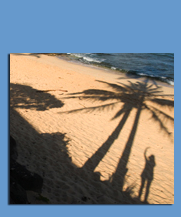













.jpg)



















